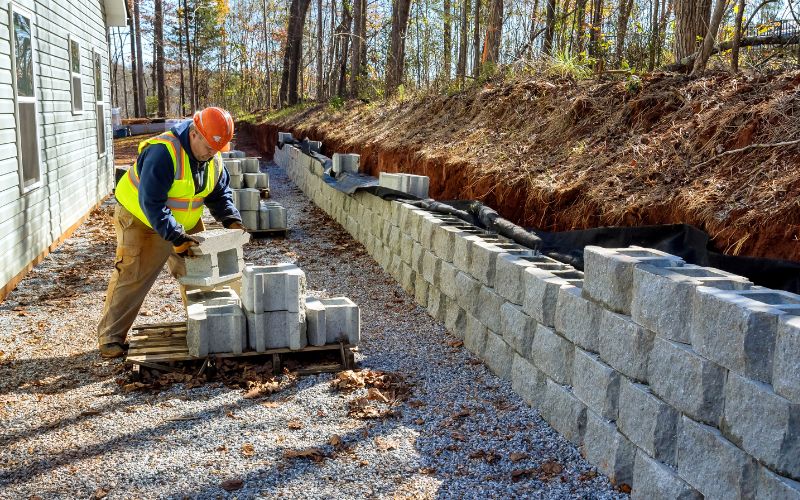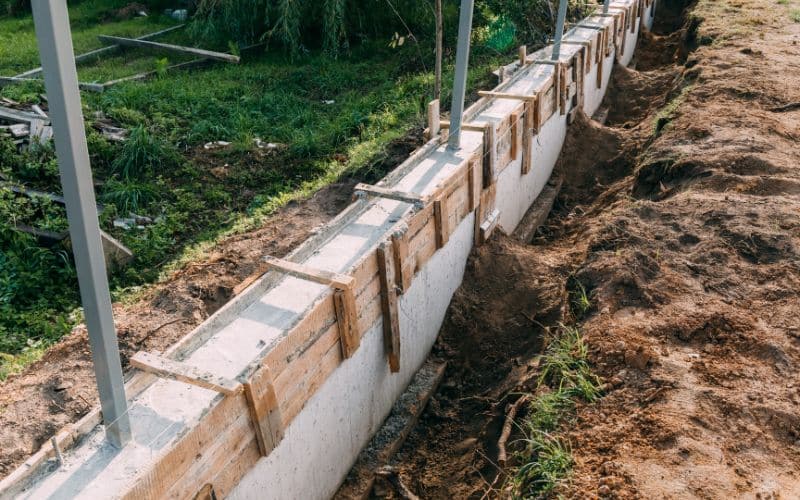
The Importance of Footing in Building a Retaining Wall
Picture this: a retaining wall standing like a sentinel in your backyard, guarding against soil erosion and creating a canvas for your gardening dreams. It’s a marvel, really, but have you ever stopped to wonder what keeps it so steadfast? The answer lies beneath the surface—in the footing. Much like the roots of a mighty oak tree or the foundation of a towering skyscraper, the footing is what anchors your retaining wall to the earth, ensuring it remains unshakeable for years to come.
What is Footing and Why Does Your Retaining Wall Need It?
Think of footing as the backstage crew in a blockbuster show—that essential but often overlooked element that ensures everything runs smoothly. In the context of a retaining wall, footing is the subterranean concrete anchor that provides the wall with the stability to resist the pressures of shifting soil and varying slopes. Neglecting to install proper footing is akin to building a house of cards; it might stand for a moment, but it’s bound to lean, crack, or topple eventually. So, when you’re sketching out plans for that new retaining wall, make footing your starting point—it’s non-negotiable for long-term stability.

Types of Footing: Which One is Right for Your Retaining Wall?
There are various types of footing, but concrete footing is the most common for retaining walls. It provides the sturdiness required to hold the wall in place. However, gravel footing is also an option, especially for smaller, non-load-bearing walls. The type of footing you choose will depend on the height of the wall and the load it has to bear.
How to Prepare the Trench for Your Retaining Wall Footing
Before you pour the concrete footing, you’ll need to dig a trench. Grab your trusty shovel and start digging. The depth of the trench will depend on the height of the wall and the slope of the land. Make sure the trench is level; otherwise, you’ll have a lopsided wall, and nobody wants that!
DIY Retaining Wall: Is It Advisable to Pour Your Own Concrete Footings?
If you’re a DIY enthusiast, you might be tempted to pour your own concrete footings. While it’s doable, it’s not a task to be taken lightly. You’ll need to consider drainage, the type of soil, and the slope. If you’re not confident, it’s best to consult a professional. After all, the footing is what keeps your retaining wall standing tall.
The Role of Drainage in Retaining Wall Footing
Drainage is crucial when it comes to footing. Poor drainage can lead to water accumulation, which can cause the soil to heave, putting pressure on your retaining wall. Make sure to install a drainage system behind the wall to avoid any water-related issues.
Concrete Retaining Wall vs. Other Materials: Does the Type of Footing Change?
While concrete is the go-to material for retaining walls, other options like timber and stone are also available. However, the type of footing may change based on the material. For instance, a timber wall may require gravel footing instead of concrete for better drainage.
How to Pour Concrete Footings for a Sloped Yard
Pouring concrete footings on a slope requires extra care. Make sure the trench is level and that you’ve accounted for drainage. Once the trench is ready, pour the concrete and let it set before you start laying the first course of blocks.
First Course of Blocks: Why It’s Crucial for Your Retaining Wall
The first course of blocks sets the tone for your entire retaining wall. If it’s uneven or poorly laid, the rest of the wall will follow suit. Make sure the concrete footing is level and solid before you start with the first course.

Common Mistakes to Avoid When Pouring a Concrete Retaining Wall Footing
- Ignoring Drainage: As mentioned earlier, poor drainage can lead to a host of problems.
- Skimping on Materials: Whether it’s concrete, gravel, or cement, quality matters.
- Incorrect Measurements: The height of the wall, the depth of the trench, and the slope—all need to be accurately measured.
- Using the Wrong Tools: A shovel is not a one-size-fits-all tool. Make sure you have the right tools for the job.
Conclusion: Your Next Steps to Build a Retaining Wall with Solid Footing
Building a retaining wall is not just about stacking blocks. It’s about creating a stable, long-lasting structure that serves its purpose. And that starts with the footing. Whether you opt for concrete footing or gravel, make sure it’s well-executed. Your retaining wall deserves nothing less.








